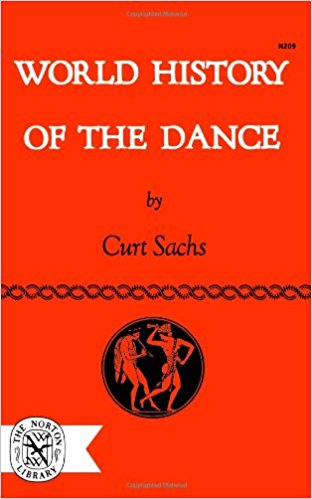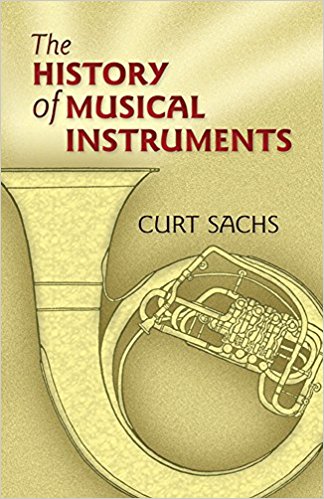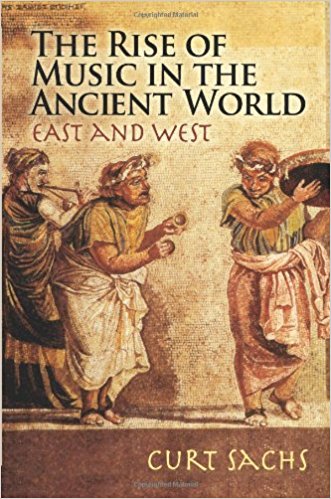Background
Born in Berlin, Sachs studied piano, music theory and composition as a youth in that city.



(This book is the most comprehensive history to appear bef...)
This book is the most comprehensive history to appear before the public of the art which has been so fundamental an expression in every period of human history. It contains a discussion of the general types and characteristics of the dance, and also deals specifically with its forms and symbols from the Stone Age through classical antiquity, the middle ages, the 18th century, and the not so distant era of the waltz and polka, to the 20th century. More inclusive than any other art, the dance has been associated with every phase of human life. In relation to their historical setting the author deals with the magic powers attributed to the dance, and such motives as fertility, war, marriage and health. We read that the Indian divorces his wife in the dance and, when he is ill, dances to dispel the disease; and that once in front of the Turkish soldiers sixty Greek mothers and girls danced the old Romaiika as they threw themselves one after another into the abyss. The book includes analyses of many forms of the art--sitting dances, dances of the hands, solo, group and couple dances--and a discussion of rhythm and melody in relation to the dance. But it is not only because of its informative character that the book is distinguished. World History of the Dance, written with rare force and insight, communicates a feeling for its subject such as is seldom found in works of historical research. It is the author's understanding of the essence of the art, its exhilaration and power to break down the distinctions of ordinary life, that makes his book so rich a contribution to the knowledge and appreciation of the dance.
http://www.amazon.com/gp/product/0393002098/?tag=2022091-20
1963

(This first comprehensive history of musical instruments, ...)
This first comprehensive history of musical instruments, this book ranges from prehistoric times to the 20th century. It traverses five continents and every stage of evolution, from primitive rattles and bull-roarers to the electric organ. Author Curt Sachs, one of the world's most distinguished musicologists, combines rich scholarship with personal insight in a remarkable fusion of music, anthropology, and the fine arts. Beginning with the earliest manifestations of rhythm, Sachs explores the association of sound with primitive rites of fertility, life, death, and rebirth. He traces the evolution of folk and ritual instruments to tools of entertainment and art, the rise of a professional class of singers and musicians, and the musical revolution that flowered during the Renaissance. Sachs chronicles the foundation of the modern orchestra during the baroque period and its subsequent development, concluding with the modern-day rise of electric and jazz instruments. A pleasure to read as well as a valuable resource, this classic work is enhanced with 24 plates and 167 illustrations. This first comprehensive history of musical instruments, this book ranges from prehistoric times to the 20th century. It traverses five continents and every stage of evolution, from primitive rattles and bull-roarers to the electric organ. Author Curt Sachs, one of the world's most distinguished musicologists, combines rich scholarship with personal insight in a remarkable fusion of music, anthropology, and the fine arts. Beginning with the earliest manifestations of rhythm, Sachs explores the association of sound with primitive rites of fertility, life, death, and rebirth. He traces the evolution of folk and ritual instruments to tools of entertainment and art, the rise of a professional class of singers and musicians, and the musical revolution that flowered during the Renaissance. Sachs chronicles the foundation of the modern orchestra during the baroque period and its subsequent development, concluding with the modern-day rise of electric and jazz instruments. A pleasure to read as well as a valuable resource, this classic work is enhanced with 24 plates and 167 illustrations.
http://www.amazon.com/gp/product/0486452654/?tag=2022091-20

(In this groundbreaking, all-encompassing work, an eminent...)
In this groundbreaking, all-encompassing work, an eminent musicologist explores the evolution of music. It ranges from the ecstatic singing and Shaman songs of early civilizations to the development of more structured styles in Egypt, East Asia, India, Greece, Rome, the Middle East, and Europe. Eight plates of illustrations depict players and orchestras from China, Korea, Burma, India, and Egypt. A survey of music in early societies leads to examinations of comparative musicology and its methods, melodic styles, rhythm and instrumental music, and polyphony. Advancing to the Western Orient and Eastern Asia, the author discusses musical systems in general, along with the concepts of scales, melody and rhythm, and notation. Subsequent chapters explore India's Vedic chants and ragas, the early modes of Greece and Rome, and the influence of the music of Islam. The book concludes with a look at the puzzle of medieval tonality and the conflict between European vocal and instrumental styles. In this groundbreaking, all-encompassing work, an eminent musicologist explores the evolution of music. It ranges from the ecstatic singing and Shaman songs of early civilizations to the development of more structured styles in Egypt, East Asia, India, Greece, Rome, the Middle East, and Europe. Eight plates of illustrations depict players and orchestras from China, Korea, Burma, India, and Egypt. A survey of music in early societies leads to examinations of comparative musicology and its methods, melodic styles, rhythm and instrumental music, and polyphony. Advancing to the Western Orient and Eastern Asia, the author discusses musical systems in general, along with the concepts of scales, melody and rhythm, and notation. Subsequent chapters explore India's Vedic chants and ragas, the early modes of Greece and Rome, and the influence of the music of Islam. The book concludes with a look at the puzzle of medieval tonality and the conflict between European vocal and instrumental styles.
http://www.amazon.com/gp/product/0486466612/?tag=2022091-20
Born in Berlin, Sachs studied piano, music theory and composition as a youth in that city.
However, his doctorate from Berlin University (where he was later professor of musicology) in 1904 was on the history of art, with his thesis on the sculpture of Verrocchio. He began a career as an art historian, but promptly became more and more devoted to music, eventually being appointed director of the Staatliche Instrumentensammlung, a large collection of musical instruments. He reorganised and restored much of the collection, and his career as an organologist began.
Sachs worked for several years as an art critic and only in 1909 embarked on musicological studies, specializing in the history of musical instruments.
After serving in the army during World War I, Sachs returned to Berlin and in 1919 was appointed director of a distinguished collection of musical instruments that he reorganized, restoring some of them so they could be played. A year later he became a professorat the Berlin National Academy of Music and was also a professor at the University of Berlin. Sachs had several posts in a variety of German museums and was invited in 1930 and in 1932 to Cairo as a consultant on Near Eastern music.
After the Nazis came to power, Sachs was deprived of all his academic titles in 1933 and had to leave his homeland. He moved to Paris to work at the Musée de l’Homme and was a visiting professor at the Sorbonne. In 1934 Sachs began a series of historical recordings, L'anthologie sonore, an introduction to early music that was used by students for many years. In 1937 Sachs made his home in the United States, lecturing at the Graduate School of Liberal Arts of New York University. He was also a consultant to the New York Public Library, adjunct professor at Columbia University, and for three years (1948-1950) the president of the American Musicological Society.
Sachs was one of the founders of modern organology, the science of musical instruments. He devised the classification system for instruments that gained universal acceptance and wrote the standard dictionary and a model catalogue of one of the major musical collections in the world (the Staatlichen Instrumentsammlung in Berlin). Musical instruments led Sachs to discover non-western cultures and their music and his studies of music in the ancient world were read through out the musical world with great interest. Sachs’s fascination with the relationship between music and the other arts inspired his major study, "The Commonwealth of Art". Among his other publications in "English are The History of Musical Instruments", "The Rise of Music in the Ancient World: East and West", "Our Musical Heritage", "A World History of Dance", and "Rhythm and Tempo: A Study in Music History".
(This book is the most comprehensive history to appear bef...)
1963(This first comprehensive history of musical instruments, ...)
(In this groundbreaking, all-encompassing work, an eminent...)
Married to Irene Julia Lewin. They had four children: George (deceased), Judith, Gabrielle, Ernest.
